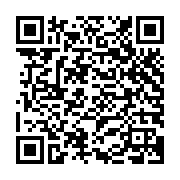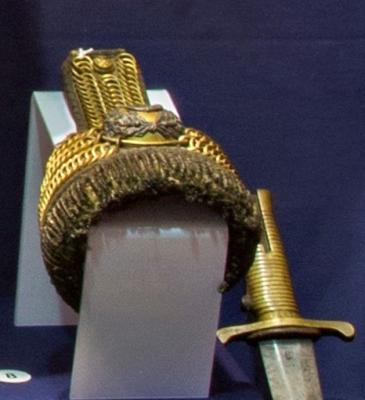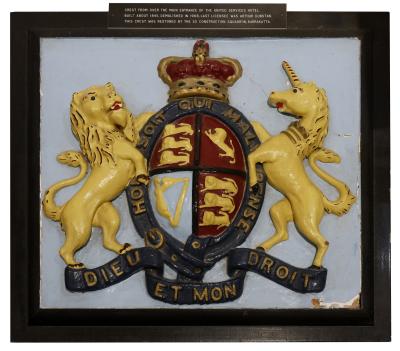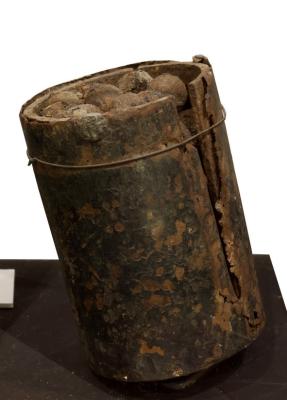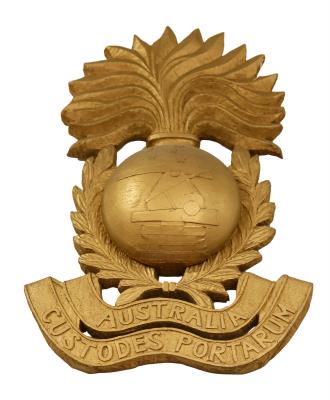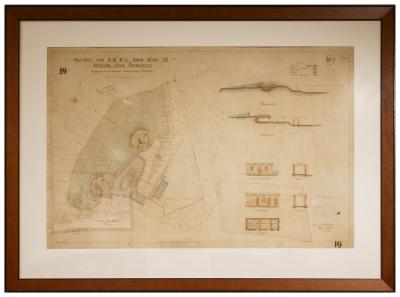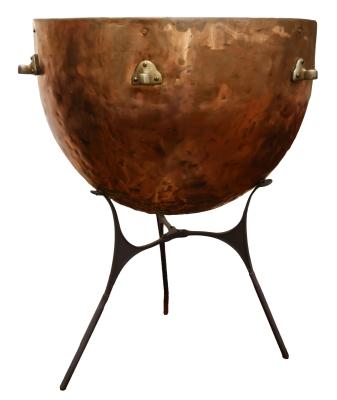Pre-1914, Infantry Coatee, GOULD, 81st Regiment of Foot, 1840
Coatee of Ensign Nicholas Gould (1821-42) of the 81st Regiment of Foot The jacket has gold buttons arranged in two parallel rows down the front and ornate gold detailing on the cuffs and collar. The tails' ornamentation is reflected in the mirror behind. The arms appear long because of the unnaturally high waist design of the Regency period.
The 81st Regiment of Foot (Loyal Lincoln Volunteers) was an infantry regiment of the British Army, raised in 1793. Under the Childers Reforms it amalgamated with the 47th (Lancashire) Regiment of Foot to form the Loyal North Lancashire Regiment in 1881. The Loyal Regiment (North Lancashire) (until 1921 known as the Loyal North Lancashire Regiment) was a line infantry regiment of the British Army that was in existence from 1881 to 1970. In 1970, the regiment was amalgamated with the Lancashire Regiment to form the Queen's Lancashire Regiment which was, in 2006, amalgamated with the King's Own Royal Border Regiment and the King's Regiment (Manchester and Liverpool) to form the Duke of Lancaster Regiment (King's, Lancashire and Border).
Details
Details
This uniform is displayed in the Pre 1914 Gallery of the Australian Army Museum of Western Australia in an exhibit relating to the service of British Regiments in Australia. The 81st did not serve in Australia but the uniform is of a design typical to that worn by British line regiments that did.
Australian Army Museum of Western Australia
Australian Army Museum of Western Australia
Other items from Australian Army Museum of Western Australia
- Pre 1914, Shell Jacket, GOULD, 81st Regiment of Foot, 1840
- Pre 1914, Epaulettes, 63rd Regiment of Foot, 1829
- Pre 1914, Epaulette, 90th Regiment of Foot, 1860
- Feature Wall - Military Band Musical Instruments
- Royal Arms, Facade of United Services Hotel, Perth
- Pre 1914, 2nd Anglo Boer War, Western Australia, Veterans' Banner
- Pre 1914, Projectile for 6 inch Mk V Coast Defence Gun, 1895
- Pre 1914, Case / Cannister Shot for 7 inch Coast Defence Gun, 1877
- Pre 1914, Large Wooden Carving of Australian Garrison Artillery Badge, 1901 - 1912
- Pre 1914 - Original Plan for Two 6 inch Guns at Arthur's Head, Fremantle Port, 1903 (1 of 2)
- Pre 1914 - Original Plan for Two 6 inch Guns at Arthur's Head, Fremantle Port, 1903 (2 of 2)
- Pre 1914, Timpani or Kettle Drum
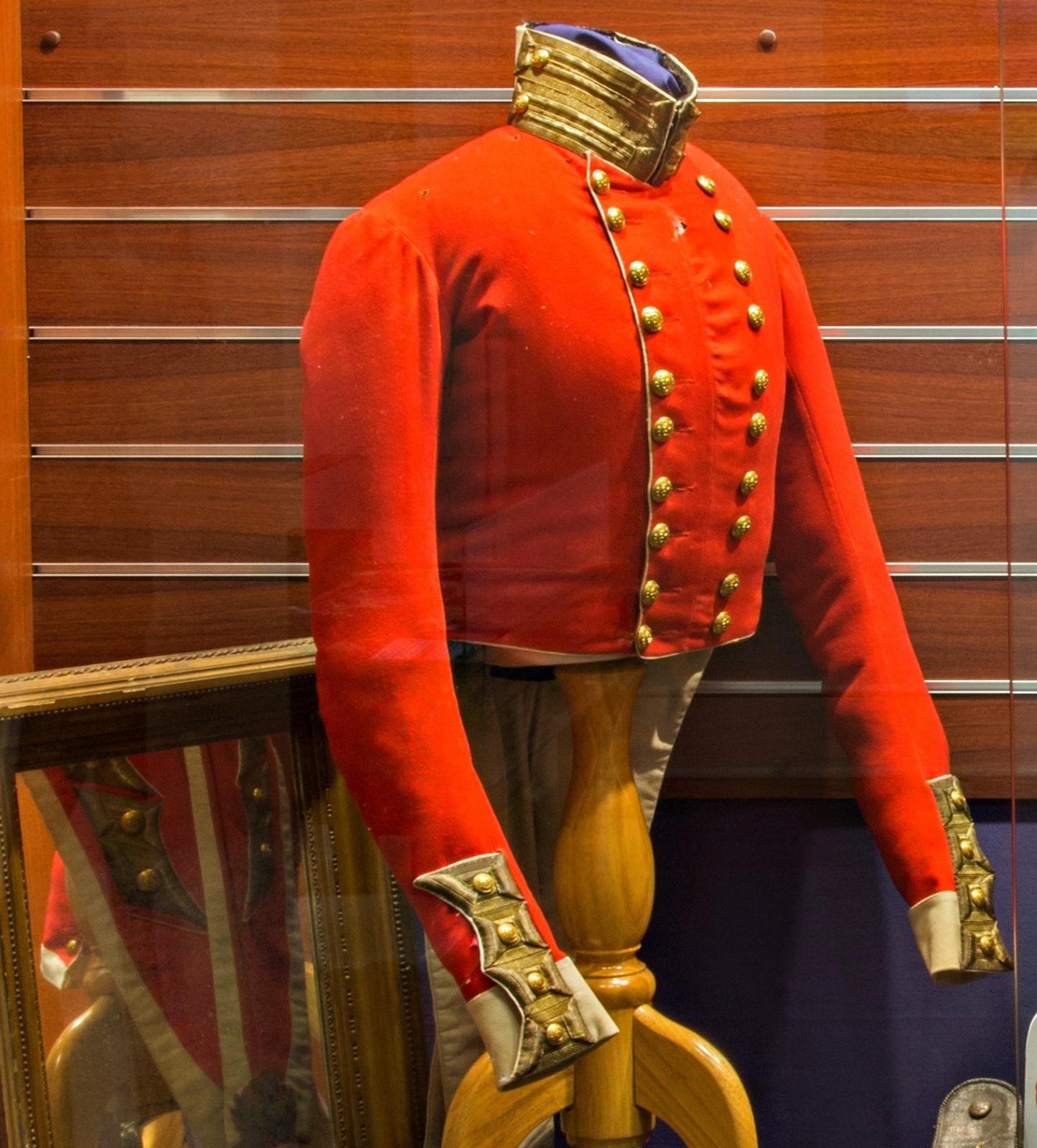
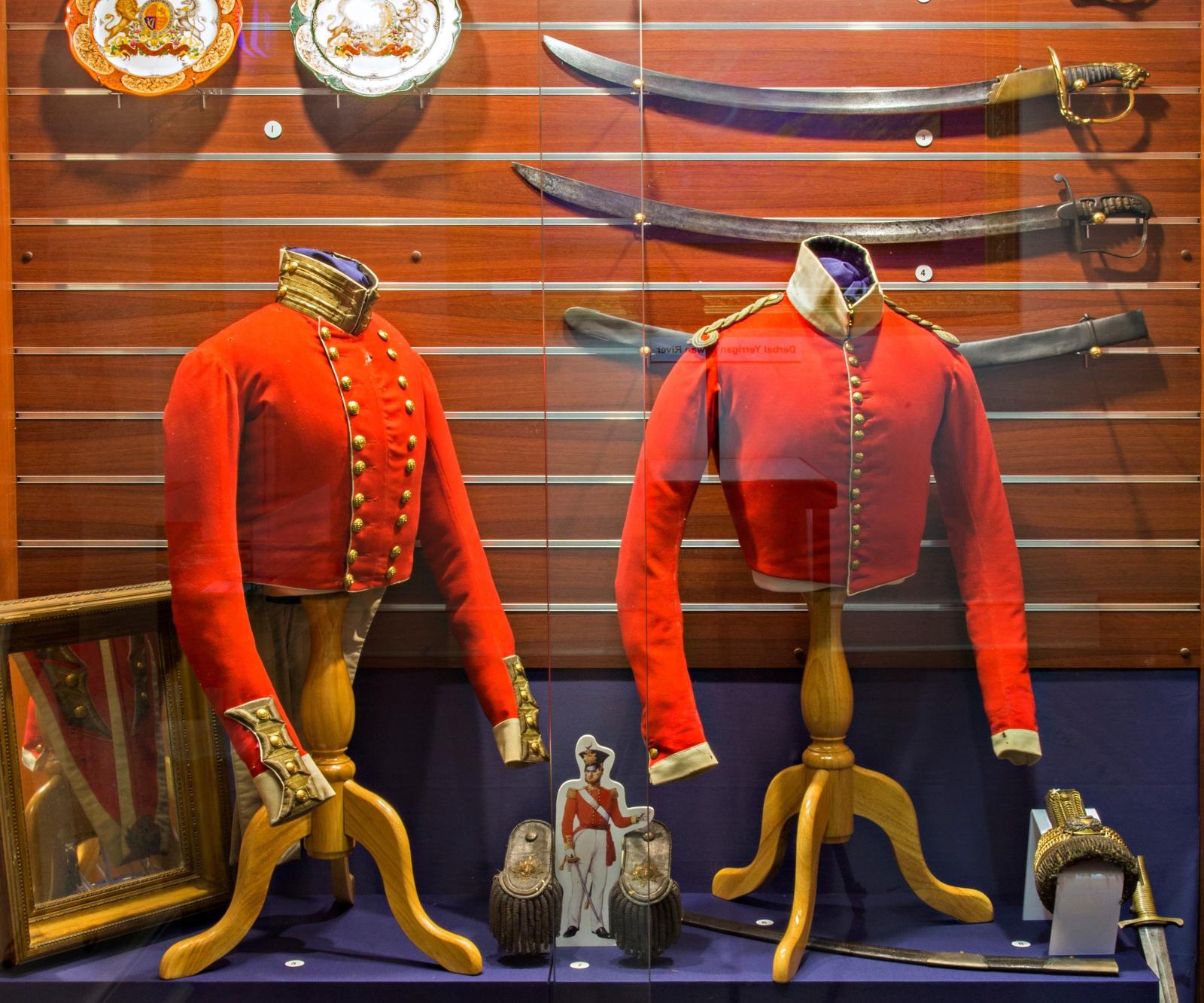

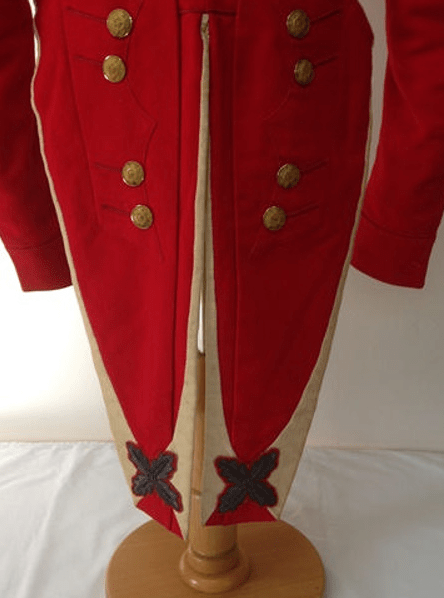
Scan this QR code to open this page on your phone ->
